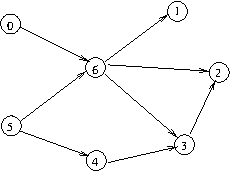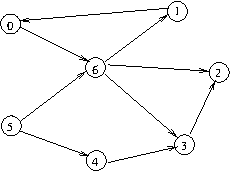
A directed acyclic graph (DAG) is a directed graph having no cycle.
Directed acyclic graphs are often used for representing dependency relations, for example:
DAG example

Cycle-containing graph

Often, when dependency relations are involved, the following two problems need to be solved:
The latter problem is called topological sorting. Note that the solution is not, generally, unique.
Finding if a directed graph has cycles or not is done while attempting to do the topological sorting.
Property: Topological sorting is possible, for a directed graph, if and only if there are no cycles in the graph.
If a graph has a cycle, then it is obvious that topologically sorting it is impossible: Suppose we have a topological sorting, and let x be the first vertex from the cycle that appears in the topological sorting. Then, let y be the preceeding vertex in that cycle; we have the edge (y,x), but y comes after x in the topological sorting, which is not allowed.
For proving the other way round, we use the construction algorithms below. We'll prove that neither one fails unless there is a cycle in the input graph.